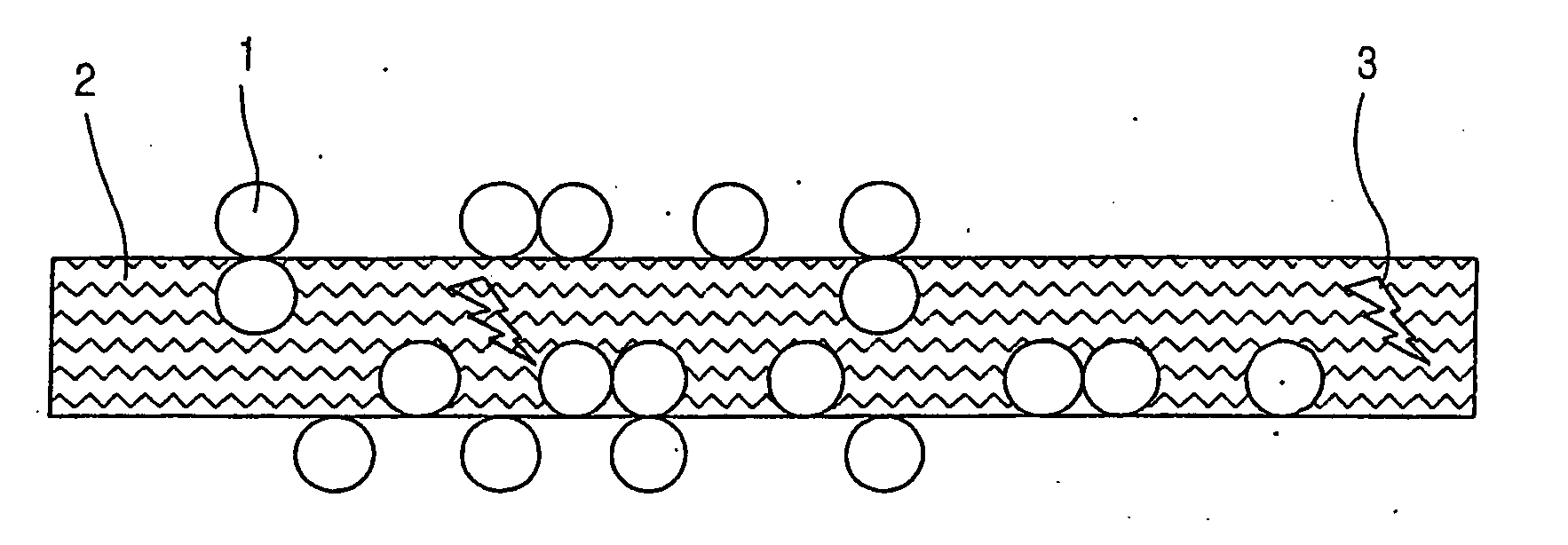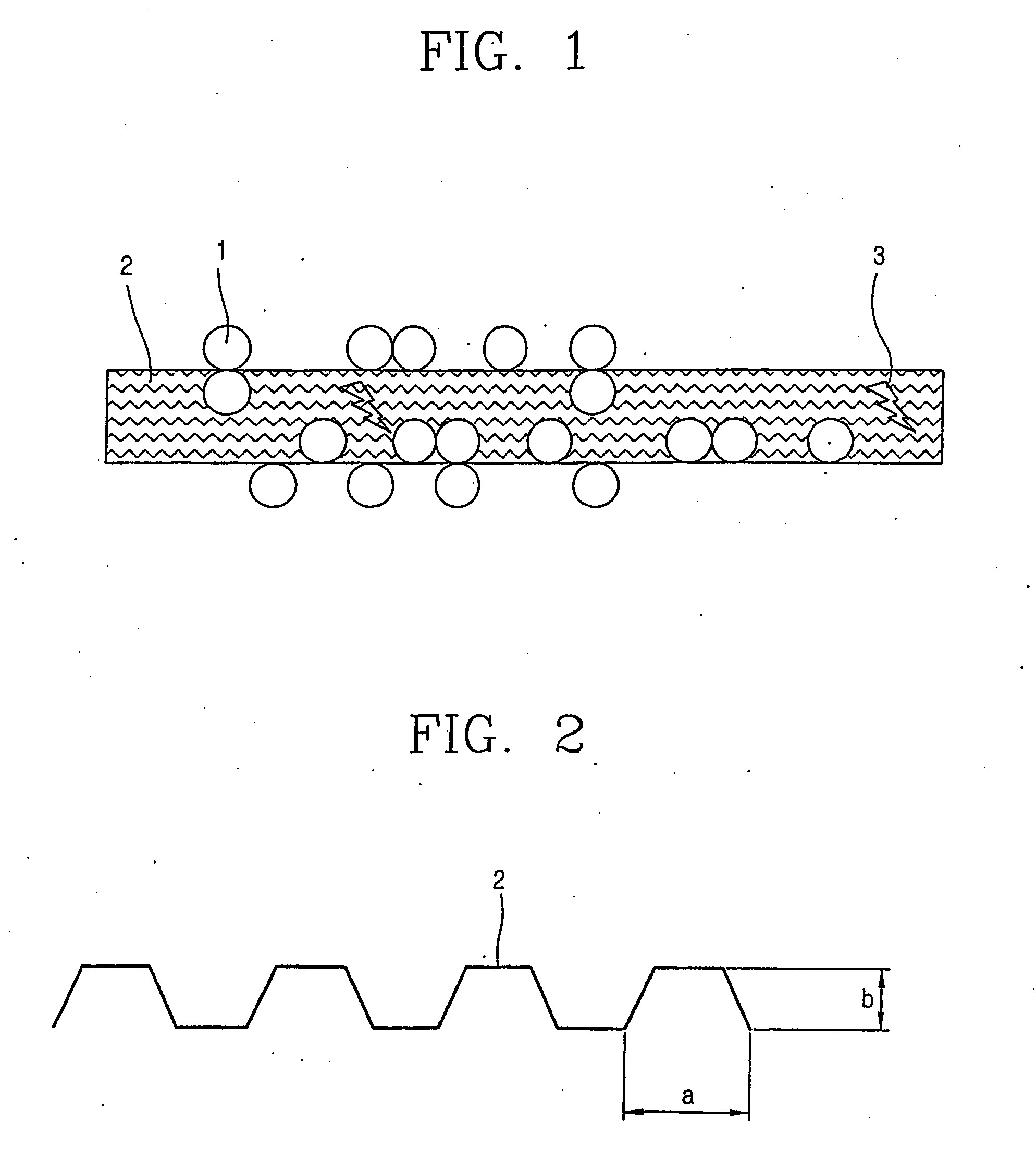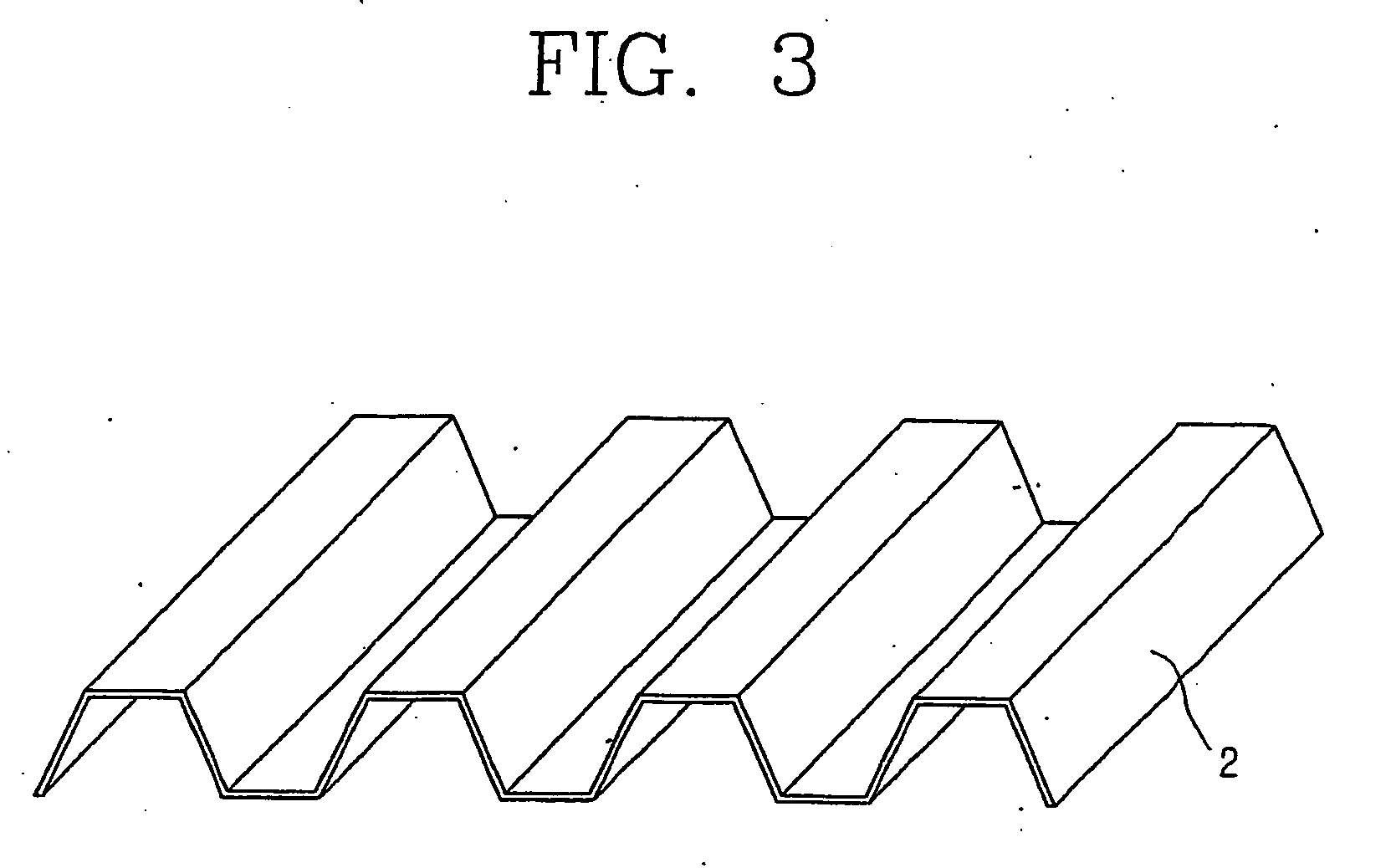Dehumidifying element and manufacturing method for the same
a technology of dehumidifying element and manufacturing method, which is applied in the direction of heating types, other chemical processes, separation processes, etc., can solve the problems of limited moisture content of supply air for being dehumidified, deterioration of dehumidifying characteristics of elements during use, and limited sorption capacity of elements, etc., to achieve high humidity absorption rate
- Summary
- Abstract
- Description
- Claims
- Application Information
AI Technical Summary
Benefits of technology
Problems solved by technology
Method used
Image
Examples
embodiment
Preferred Embodiment
[0039]FIG. 1 is a longitudinal sectional view of the dehumidifying element according to the present invention.
[0040] As shown in FIG. 1, the dehumidifying element of the present invention is composed of a porous carrier 2 to the surface or the inside of which SAP is attached. The SAP is formed in the porous carrier or at a surface thereof as granular particles 1.
[0041] The granular particles 1 include the SAP, and the SAP is contacted to a hygroscopic base (not shown). At this time, the carrier 2 consists of fiber composed of natural or composite polymer and a filament. Further, the carrier 2 includes fibers 3 containing the SAP therein, in which the fibers 3 are inserted into the porous carrier 2. The fibers 3 are contacted to the hygroscopic base in a finely distributed form like the granules 1, and can be applied to a surface of the porous carrier 2.
[0042] A particle diameter of the granules 1 is approximately identical for all granular particles and is in ...
PUM
| Property | Measurement | Unit |
|---|---|---|
| particle diameter | aaaaa | aaaaa |
| temperature | aaaaa | aaaaa |
| particle diameter | aaaaa | aaaaa |
Abstract
Description
Claims
Application Information
 Login to View More
Login to View More - R&D
- Intellectual Property
- Life Sciences
- Materials
- Tech Scout
- Unparalleled Data Quality
- Higher Quality Content
- 60% Fewer Hallucinations
Browse by: Latest US Patents, China's latest patents, Technical Efficacy Thesaurus, Application Domain, Technology Topic, Popular Technical Reports.
© 2025 PatSnap. All rights reserved.Legal|Privacy policy|Modern Slavery Act Transparency Statement|Sitemap|About US| Contact US: help@patsnap.com



